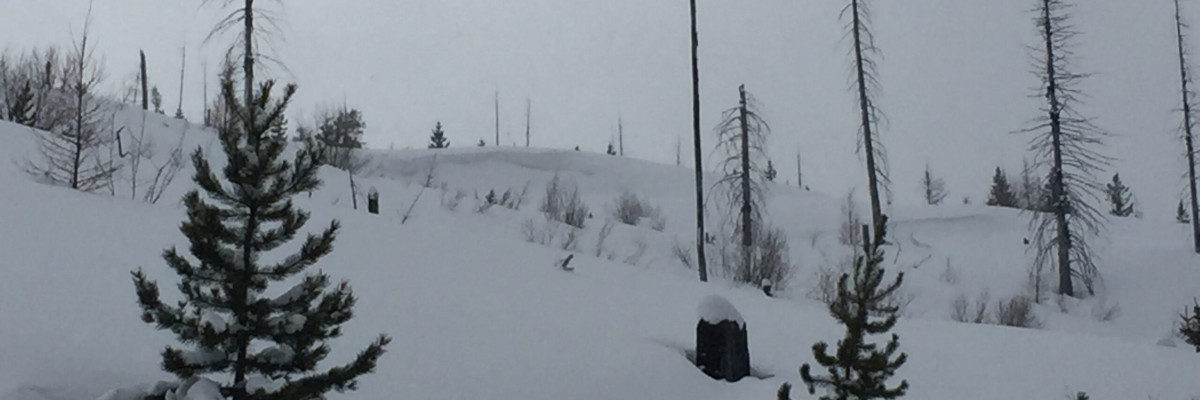The current avalanche danger is CONSIDERABLE in the west central Montana backcountry. Careful snowpack evaluation, cautious route-finding, and conservative decision-making are essential today. Human triggered avalanches are likely.
Good morning, this is Travis Craft with the West Central Montana Avalanche Center’s avalanche advisory for March 07, 2017. This danger rating does not apply to operating ski areas, expires at midnight tonight and is the sole responsibility of the U.S. Forest Service.
Weather and Snowpack
Mountain temperatures range from 7 F to 21 F in the region. Winds are 9 mph with gusts of 17 mph out of the SSW in the Bitterroot. Point Six, in the northern part of the advisory area, winds are 20 mph with gusts of 33 mph out of the WNW. The area received 3 to 7 new inches of snow. The new snow had SWE’s ranging from .3 to .5 inches of water.
Josh and I took the sleds to Lolo Pass yesterday. Ryan and Steve both were in the Rattlesnake. Dudley was at Yurt Ski in the southern Swan. Josh and I observed active wind transport of snow to leeward slopes. Ryan found depth hoar that propagated in a shallow snowpack(Video). Steve was able to get propagation on Near Surface Facets above the last rain crust in a PST. We have received over 3 feet of snow in the last storm cycle.
The primary concern is wind slabs. Winds have loaded leeward slopes. Identify these slopes and avoid them. Overnight winds gusted into the 40’s in the northern part of the advisory area and gusted into the mid 30’s in the Bitterroot. There was plenty of snow available for transport.
The second avalanche concern is storm slabs. With new snow overnight, the snowpack needs time to adjust to the new load.
The final avalanche problem is persistent weak layers. Steve got propagation on the Near Surface Facets above the last rain crust. Ryan got propagation on the basal facets on the ground. Dig a pit to assess these layers before committing to any steep slope. Avoid rocky outcrops and cliff bands that are likely trigger points.
Sunday, two skiers were caught in an avalanche near Stonewall Mountain by Lincoln, Montana outside of our advisory area. One skier was partially buried while the other was caught in the trees. Lewis and Clark SAR were called and assisted with the rescue. We will update with more information as it becomes available.
Avalanche and Weather Outlook
The forecast calls for significant amounts of snow for tonight through Friday. Snow levels are predicted to rise above 5000 feet by Thursday. With these conditions, the avalanche danger will increase.
If you are out in the backcountry, please send us your observations, these are very helpful in producing the advisory. I will issue the next advisory on March 09, 2017.
Ski and ride safe.














